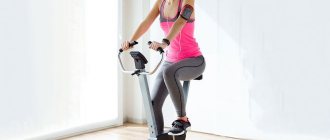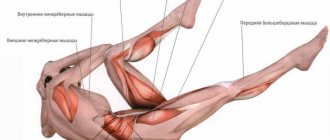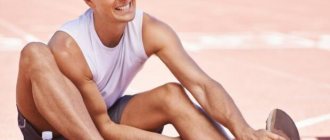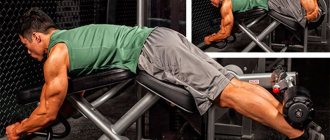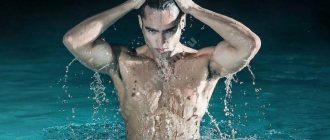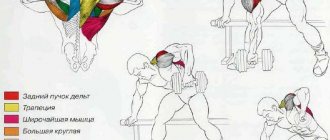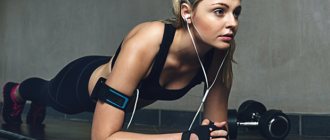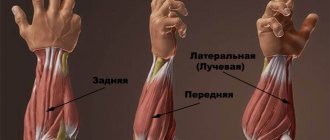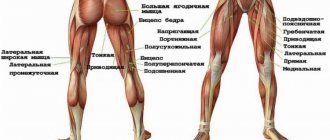Science that studies the body
In this regard, the concepts of “fascia” and “myofascial chains” also appeared. The science that directly deals with the health of the human body is called kinesiology. From “kinesio” - movement, “logos” - to study. That is, she studies the patterns of body movement.
This may be applicable in sports, in the treatment of pathologies, massage therapists and chiropractors may be interested in this. There are not many kinesiologists, but more and more modern doctors - osteopaths, neurologists - are interested in this area.
Pronation and supination: what does it mean?
Let's look at some of the terms used by kinesiologists and their explanations. Rotation, pronation and supination are types of movement of the limbs and shoulder joints in kinesiology.
Pronation is the inward turning movement of the upper or lower limbs. This may include movement of the hand, forearm and humerus. As well as the foot, lower leg and femur.
Let's look at the example of a hand. If you extend your arm forward so that your thumb is on top, and then rotate it 90 degrees inward so that your palm becomes horizontal, this movement will be pronation. This type of rotation is performed by a group of muscles called pronators.
In the same way, supination is performed by muscles called supinators. Only in this case is the lateral edge turned outward, in the opposite direction.
For what activities is pronation important?
Understanding individual foot rotation is useful information for everyone. Self-diagnosis is useful for persistent calluses and discomfort after walking in sneakers.
The limb feels the push and landing. The lower part of the leg, the muscle is very tense. A one-time short run in unsuitable shoes will not cause the development of a defect.
Knowing pronation is a must for runners and professional athletes whose lives involve running. With regular, increased loads in the wrong sneakers, failure of the musculoskeletal structure will occur in a short period of time. Developing pathology increases the likelihood of injury. Musculoskeletal disorders can lead to career ending.
Pronation of the foot
Let's take a closer look at what it is - pronation of the foot? You can also pronate your foot separately. In this case, it is necessary to turn it, lowering the medial part down (inward, towards the central axial line of the body). The muscles involved are the pronators of the lower extremities. Pronation of the foot involves the peroneus longus and brevis muscles.
Supination is the outward turning of the lateral part of the foot (outward, outward from the center line of the body) of the lower or upper extremities. The principle is the same as in pronation, only the movement is in the opposite direction. It is carried out by a group of muscles - supinators: long extensor pollicis and tibialis anterior.
Custom orthopedic insoles and shoes
Arch supports are special insoles that help restore the foot if there are deviations. To eliminate pain and effectively recover, it is necessary to correctly select the shape of the insole. To make the most practical arch supports, it is necessary to undergo an orthopedic examination: to determine the degree of flat feet and size.
Modern insoles are made from various materials and can consist of: silicone, europlastic, supralene.
- For increased flat feet, inlays are used for the forefoot.
- The back of the insole can be designed to eliminate pain and reduce stress on the heels.
- Sometimes insoles can be made with spacers between the toes to prevent the toes from shifting.
- The most natural option, implemented with a padded arch support for the heel and a pronator for the front part. This insole promotes twisting of the foot, which allows you to unload the muscles and reduce the tensile force.
In cases with an increased degree of flat feet, you cannot do without special shoes - boots with laces and solid soles. As a rule, to make such shoes, a plaster cast is required.
In order to choose the right healthy shoes, you need to understand what to look for:
- Solid soles and high-quality insoles with arch supports are a sign of good shoes that will perfectly develop the foot if there are deviations from the norm. The design of such shoes allows you to roll well from toe to heel.
- Insoles tend to rise up, lifting the inside of the foot.
- In order to avoid changes in the shape of the toe, the front of the shoe should not be excessively narrow or wide.
- It’s good if the insole contains a soft pad under your toes.
- The back of the shoe should properly fix the heel and be sufficiently rigid. Flip-flops have a negative effect on the ligaments and muscles of the foot when worn for a long time.
- Good shoes, as a rule, are made of leather, since they are soft, stretch well, and breathe.
Poorly developed muscles and ligaments of the foot contribute to the development of flat feet, since they are the main cause of pronation problems in eight out of ten cases.
Competent and regular training is the key to the health of not only your legs, but also the body as a whole. Muscles and ligaments require constant exercise to maintain a healthy shape.
Features of gait and shoes
Perhaps many have noticed how some people walk “clubfooted,” that is, they have weak arch supports and the foot falls inward. Or, conversely, a Chaplin-style gait indicates weakness of the pronators. It should be noted that these muscle groups are antagonists. Antagonists are groups that are opposite in their biomechanics, designed together to balance each other, keeping the limb in a central position.
Pronation and supination - this affects the upper limbs and is very different from the same movements of the lower limbs. This is due to the structure and mobility of articular and tendon structures. There are three ways to place your foot when walking or running:
- With normal pronation. It can be easily identified by the footprint of a foot in wet sand or a wet foot on paper or the floor. The imprint will be characteristic, curved outward. An imprint is not formed at the instep of the foot; it should be understood that this is normal pronation of the foot.
- With overpronation. In this case, the person becomes as if turning his foot inward; this is typical in the presence of flat feet. The imprint of such a foot is wide, almost not curved, the instep is either minimal or absent at all. In this case, the sole of the shoe will wear off from the inside (especially the heel). The foot, “piled” inwards, twists the remaining parts of the leg in a chain, creating rotation of the knee joint and greater trochanter of the femur. Which leads to wear and tear of the articular surfaces. Severe pronation of the foot is, in fact, flat feet.
- With hypopronation. This means weakness of the pronators and inversion of the foot. Also, the gait of people with hypopronation is special - they seem to throw their socks out, and the outer side of the sole of the shoe, especially the heel, wears off. At the same time, the knee joint also rotates, creating pathology, and the femur is also slightly everted.
People with pronation problems should consult with an orthopedic doctor or kinesiotherapist and choose the best shoe option for themselves. The sole should not be thin, the heel part will be reinforced and have a small heel. In case of hypopronation, doctors often recommend wearing special inserts and insoles - arch supports. This is done so that disorders from the foot do not rise up the muscle chains and do not cause arthritis and arthrosis of the joints due to compensatory rotation.
How to determine overpronation and hypersupination of the foot
There are 2 types of diagnostics:
- Static. Determines pronation in a stationary position and does not show the actual work of the foot during running.
- Dynamic. More accurate method. The arch of the foot is checked using a special machine, similar to a scanner, while standing on two legs, on one leg and in a squat. Then a treadmill test is performed, a video is recorded and the test is played back in slow motion.
The dynamic test is carried out in specialized running stores. Unfortunately, there are few such people in Russia. And those that exist are concentrated in Moscow and St. Petersburg. If you are unable to get such a test, contact an orthopedic center. There they will check you on a scanner, but without a treadmill. After checking, they will most likely offer to buy or order insoles. Just don’t rush to buy them right away.
A static test can be done at home - this is a simple "wet test". Stand with your wet foot on the floor and look at the print
Shoulder
Pronation and supination are two types of movements that also affect the shoulder. It differs in biomechanics from other parts of the body and completely depends on the structure of the shoulder joint - one of the most complex in its biomechanics. It is produced by moving the shoulders inward (pronation) and moving the shoulders back (supination). The pronators and supinators of the shoulder girdle are designed to maintain posture, straight position of the upper back and are also opposite in their biomechanics (antagonists).
The following muscles work in pronation (inward rotation) of the shoulder: pectoralis major, teres major, latissimus dorsi and subscapularis.
The muscles involved in supination (outward rotation of the shoulder) are the infraspinatus and teres major.
Types of foot pronation and selection of running shoes
Actually, the choice of running shoes is based on the fact that, having strong pronation (excessive, hyperpronation), it is necessary to use shoes with enhanced support on the inside of the sole and, possibly, with various kinds of wedge-shaped inserts and special insoles. And with insufficient pronation (hypopronation), on the contrary, sneakers that promote better shock absorption of the inner heel. In addition, the rest of the sole also has some changes in design, because the “exit” occurs through different areas of the feet.
The purpose of all the tricks is to compensate for the natural inability to absorb shock loads and prevent possible injuries. If there is a strong deviation from the norm, improper functioning of the ankle also leads to unnatural loads on all other joints, as well as pain in the back, head, etc.
To a greater extent, all this is true for a rigid, incorrect running technique with a heel landing.
If you run for a long time with overpronation (and this is the most common case), without compensating for it with the design of shoes or running technique, this can lead, for example, to excessive displacement of the patella and the formation of this leads to abrasion (erosion) of the cartilage of the patella (chondromalacia patella). ).
Rotation
Rotation is another type of movement and it means “turning.” It is inherent not only to the limbs of the human body, but also to some constituent elements, for example, vertebrae. Pronation and supination can be considered incomplete rotation. The range of motion of the upper and lower extremities is very different, which is important to remember. Any rotation is designed to stabilize parts of the body during movement.
The rotator muscles (pronators and supinators) are small and unremarkable in the general relief of muscle mass. But athletes need to be told about them; the coach must convey to beginners the importance of antagonists for building body composition.
Introduction to the concept
From an anatomical point of view, pronation and supination are rotational movements of the limbs controlled by special purpose muscle groups. And the science that studies the work of muscle groups in the human body is biomechanics, which appeared relatively recently - in the 70s of the last century.
This medical field studies a number of important problems that arise in the human body during movement. The data obtained as a result of research is of great help to athletes and patients with impaired motor function.
Use in bodybuilding
In bodybuilding, the use of pronation and supination is popular, this is important, for example, when lifting dumbbells. When working with free weights, an athlete can use different muscle groups. Pronators and supinators must be inflated evenly. Visually, these are the muscles of the forearm and lower leg. If you don’t do this, then the bodybuilder will have his arms spread out to the sides while walking, and his legs will “throw out” in a funny way.
The pronators and supinators of the shoulder, as antagonists, can either ruin posture or improve it. Therefore, a bodybuilder needs to pump up both the pectoral muscles and the back muscles. Sometimes an athlete’s shoulders seem to be turned forward, this indicates stretching of the rhomboid and infraspinatus muscles, while the pectoralis major, on the contrary, is severely spasmed. This can cause numbness in the fingers and pain in the attachment points of the pectoralis major muscle.
What is supination?
Supination is a rotational movement of the hand to a palm-up . It is this technique that we will need to do when lifting the dumbbell upward, when it approaches the top point. without supination is shown below .
Lifting dumbbells for biceps without supination: the hand does not turn palm up
The reverse movement of the hand with the palm turning from a neutral position is called pronation. You won’t need it here, but knowing this term will be one hundred percent useful in the future.
Raising the forearm with supination
Lifting dumbbells with supination is carried out with the hand turned outward. The supinators are trained: short supinator and biceps muscle (biceps). The biceps muscle becomes stronger when the elbow is bent to 90 degrees. We perform rotation of the forearm with supination while working with a screwdriver, for example, or unscrewing a tap.
Thus, the supinated biceps curl trains additional muscles and stabilizes the forearm, making it strong. This is especially important in arm wrestling.
The pronators include: pronator quadratus and pronator teres. They are much weaker than their antagonists. When a person finds it difficult to unscrew a bolt that is twisted crookedly, he uses more force and uses inward rotation of the shoulder (shoulder pronation). The brachioradialis muscle acts in this case as a pronator, although initially this function is not inherent to it. Initially, the brachioradialis muscle is a flexor of the forearm.
A harmonious body structure is the goal of muscle development, so it is necessary to take into account the role of pronation and supination for both professional athletes and beginners.
How to do the exercise?
- You need to sit on a bench and take a dumbbell in each hand and take the starting position. In this case, the palms must be turned inward.
- Take a deep breath and begin to lift one of the dumbbells, and at the moment when the forearm is parallel to the floor, you need to begin supination - turning the hand outward.
- While the dumbbell reaches the top point, you need to take a short break and return to the starting position, turning the hand back.
- Repeat the same with the dumbbell in the other hand.
For best results, try to keep your elbows still during the approach. When the elbows deviate from the body, the load shifts from the biceps. You should turn the hand only at the moment when the elbow is at a right angle. Otherwise, this can lead to traumatic stress on the shoulder joint. And also you should not use cheating.
Pronation and supination of the hand are extremely important points that allow you to use this exercise efficiently and most effectively to achieve the desired results.
